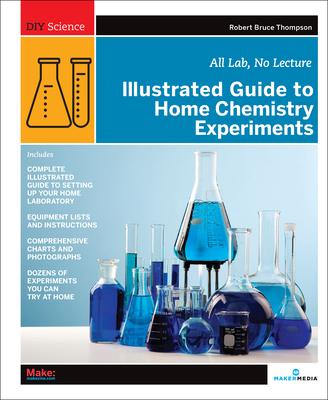For students, DIY hobbyists, and science buffs, who can no longer get real chemistry sets, this one-of-a-kind guide explains how to set up and use a home chemistry lab, with step-by-step instructions for conducting experiments in basic chemistry -- not just to make pretty colors and stinky smells, but to learn how to do real lab work:
- Purify alcohol by distillation
- Produce hydrogen and oxygen gas by electrolysis
- Smelt metallic copper from copper ore you make yourself
- Analyze the makeup of seawater, bone, and other common substances
- Synthesize oil of wintergreen from aspirin and rayon fiber from paper
- Perform forensics tests for fingerprints, blood, drugs, and poisons
- and much more
From the 1930s through the 1970s, chemistry sets were among the most popular Christmas gifts, selling in the millions. But two decades ago, real chemistry sets began to disappear as manufacturers and retailers became concerned about liability., em>The Illustrated Guide to Home Chemistry Experiments steps up to the plate with lessons on how to equip your home chemistry lab, master laboratory skills, and work safely in your lab. The bulk of this book consists of 17 hands-on chapters that include multiple laboratory sessions on the following topics:
- Separating Mixtures
- Solubility and Solutions
- Colligative Properties of Solutions
- Introduction to Chemical Reactions & Stoichiometry
- Reduction-Oxidation (Redox) Reactions
- Acid-Base Chemistry
- Chemical Kinetics
- Chemical Equilibrium and Le Chatelier's Principle
- Gas Chemistry
- Thermochemistry and Calorimetry
- Electrochemistry
- Photochemistry
- Colloids and Suspensions
- Qualitative Analysis
- Quantitative Analysis
- Synthesis of Useful Compounds
- Forensic Chemistry
This hands-on introduction to real chemistry -- using real equipment, real chemicals, and real quantitative experiments -- is ideal for the many thousands of young people and adults who want to experience the magic of chemistry.
